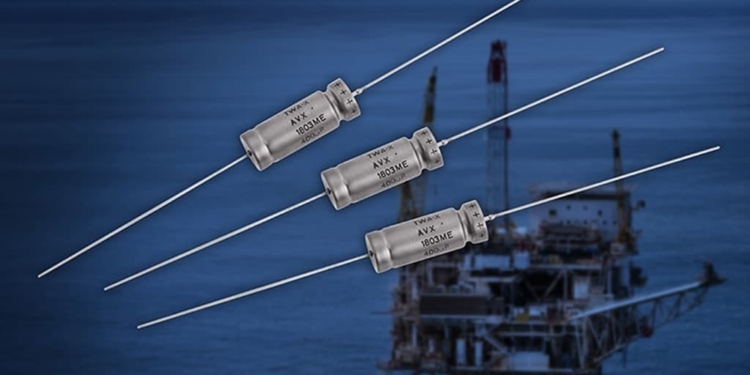Source: AVX news
Ideal for military, aerospace, industrial, & oil drilling equipment, the new high-CV TWA-X Series capacitors are resistant to mechanical shock & high-frequency vibration per MIL-STD-202 & are capable of up to 500-hour lifetimes at extreme temperatures & derated voltages.
FOUNTAIN INN, S.C. (June 7, 2018) – AVX Corporation, a leading manufacturer and supplier of advanced electronic components and interconnect, sensor, control, and antenna solutions, has launched a new high-temperature wet electrolytic tantalum capacitor series. Designed for use at 230°C, the new TWA-X Series wet electrolytic tantalum capacitors feature a high-capacitance cathode system that achieves high CV performance in standard case sizes and a hermetically sealed, welded tantalum can and header assembly that provides robust resistance against mechanical shock and high-frequency vibration.
Ideal for use in military, aerospace, industrial, and oil drilling equipment, TWA-X Series capacitors are also mechanically tested in accordance with MIL-STD-202 and provide the highest capacitance available for the longest duration – up to 400μF for 500 hours of operation at 230°C – of any wet tantalum capacitor in the form factors offered. They are currently available in DSCC case size T4 (AVX case size “E”) with two initial ratings: 400μF/100V and 330μF/125V.
“Our new TWA-X Series offers high-temperature versions of conventional wet electrolytic tantalum capacitors and is especially well suited for use in oil drilling and other high-temperature, harsh environment applications,” said Mitch Weaver, a member of the technical staff at AVX.
The axial-leaded T4 (“E”) case TWA-X Series capacitors measure 26.97mm in length and either 10.31mm in diameter with an insulating sleeve or 9.52mm in diameter without an insulating sleeve. The axial leads are available in RoHS-compliant, lead-free compatible matte tin or in 60/40 tin/lead and measure 57.15mm in length.
The 400μF/100V TWA-X Series capacitors are rated for 2,000 hours at 200°C when derated to 60V and for 500 hours at 230°C when derated to 25V. The 330μF/125V parts are rated for 500 hours at 200°C when derated to 75V and for 500 hours at 230°C when derated to 40V.


































